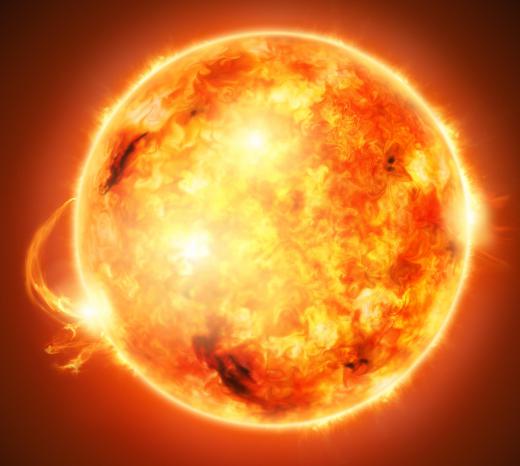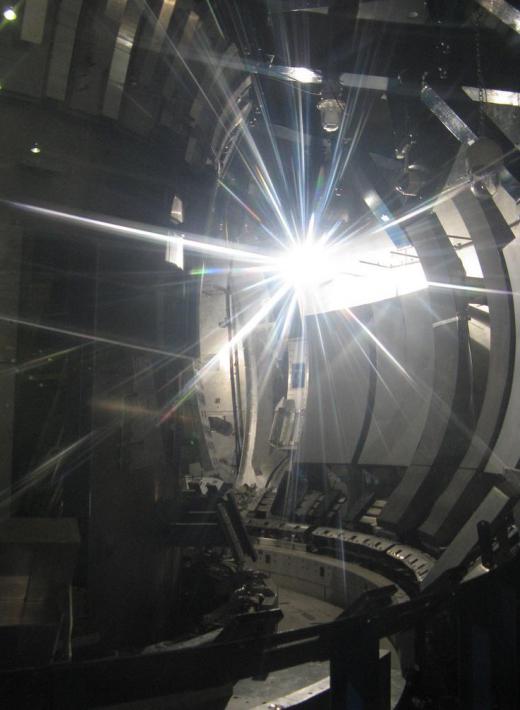What are Some Prominent Features of the Sun?
 Michael Anissimov
Michael Anissimov
The Sun, also known as Sol, is the gigantic ball of burning gas located at the center of the solar system, in case you hadn't noticed. Accounting for 99.8% of the solar system's mass, the Sun is continuously fusing four million tons of superheated hydrogen into helium every second. Helium already makes up 25% of its mass.
The Sun is about halfway in its life cycle between its birth and its future transformation into a red giant star, with a diameter as wide as the orbit of Earth. After it exhausts its nuclear fuel in about five billion years, most of its atmosphere will escape, forming a planetary nebula and leaving behind a tiny white dwarf. Called a "stellar remnant," a white dwarf is about half the mass of the Sun but with a volume comparable to the Earth. Lacking any nuclear fuel, it slowly disperses its residual heat over many billions of years, eventually becoming a black dwarf. This life cycle is typical for low and medium-mass stars like the Sun.

The Sun is almost a perfect sphere, bulging at the equator only to nine parts in a million. It is made of plasma, which is a superheated phase of matter that consists a charged soup of electrons with mostly hydrogen nuclei (protons) floating within. The Sun is convective, circulating its plasma between its layers. The plasma also rotates about once a month — 25 days at the equator, 35 days at the poles. The Sun is the only body in the solar system made out of plasma, created by the nuclear furnace in its core.

The Sun's core is where all the action happens. Extending about 0.2 solar radii from the Sun's epicenter, the core composes only 10% of the Sun's volume, but about 40% of its mass. It is about 15 times denser than lead, and is the only portion of the Sun that generates its own heat, through nuclear fusion. It takes a tremendous amount of time for the energy generated in the core to reach the Sun's surface - estimates range between 17,000 and 50 million years.
The distance from the Earth to the Sun is about eight and a third light minutes. This means that if the Sun exploded, we wouldn't know for about eight minutes. Hopefully that will never happen!
AS FEATURED ON:
AS FEATURED ON:












Discuss this Article
Post your comments